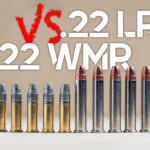
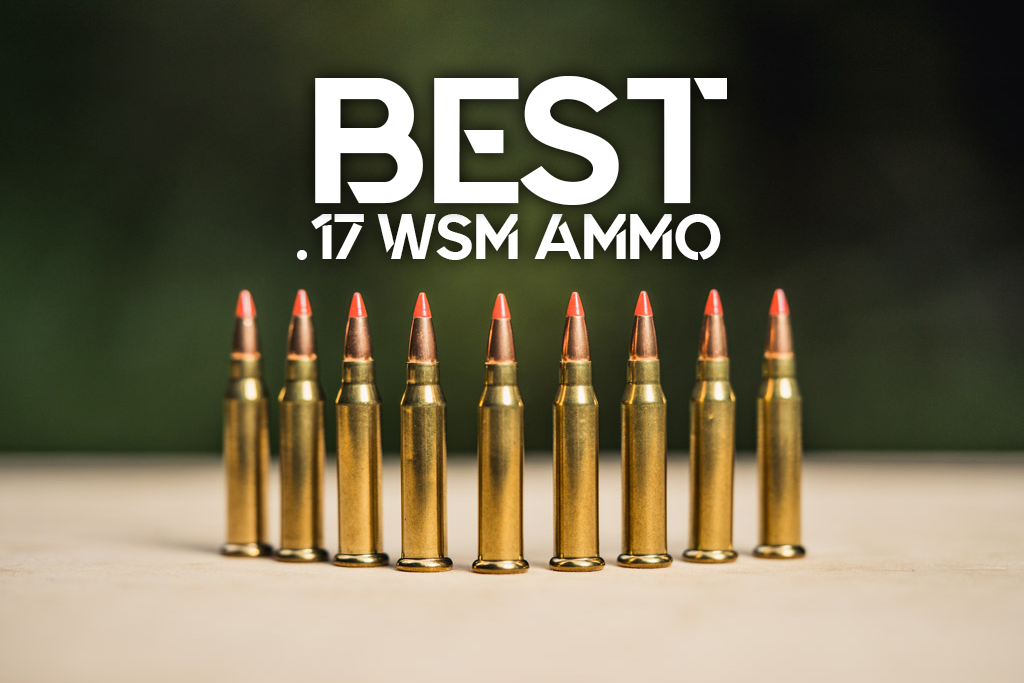
If the .17 Hornady Magnum Rimfire (HMR) is your first choice for varmint ammo, then be prepared for an upset. Introducing the .17 Winchester Super Magnum (WSM), that uses a heavier 20gr bullet than the HMR but fires them nearly 20% faster and with about 65% more muzzle energy. Armed with the best .17 WSM ammo, you’ll be a menace to varmints far and wide!
Rimfire History
There is a short history of the .17 WSM because it has only been in production for less than a decade. Released in 2012 by Winchester and put into production in 2013, it is still available in a limited number of firearms, with the most widely distributed being produced by Savage Arms and Ruger. Shooters who enjoy a traditional semi-auto rifle chambered in .17 WSM should check out the Volquartsen series rifles.
Winchester created the round to be a dominant force in varmint eradication while retaining the simplicity and compactness of a rimfire. It is a good in-between cartridge for when overshooting is a concern and the targets are under 50 pounds. The only factor holding the .17 WSM from catching on is limited accessibility. With only a handful of cartridges and a scarce selection of firearms available, the .17 WSM might have a tough time catching on in an already crowded gun ecosystem.
Best 17 WSM Ammo
Originally produced in 2013, the .17 WSM has seen a few evolutions over the years. For the first decade of its existence, the.17 WSM was only available in a polymer-tipped projectile and the Hornady V-Max, a 20-grain projectile and registered trademark.
However, Hornady recently discontinued its .17 WSM V-Max line. Fortunately for us, Winchester stepped in to fill the void with its Varmint X 17 Win Super Mag projectiles. These 15-grain projectiles also feature a polymer tip and have a muzzle velocity of 3,300 FPS.
Lead-Free
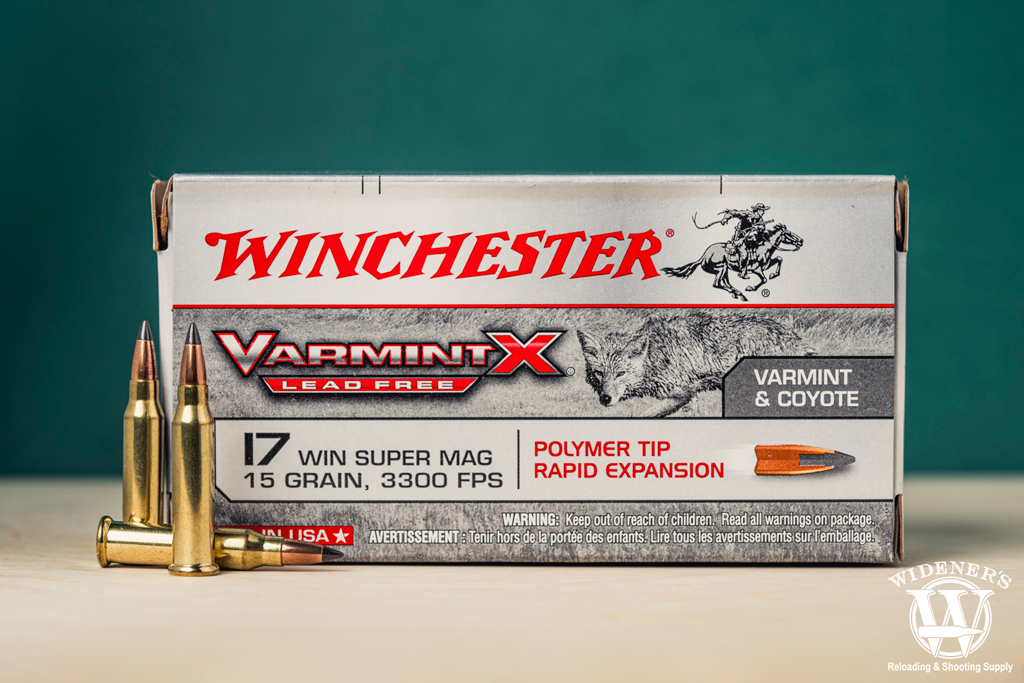
The varmint hunting community respects Winchester’s lead-free .17 WSM Varmint-X load.
The Varmint X fits nicely between the .22 Hornet and .17 HMR. It is perfect for taking out small game and lives up to its namesake. The velocity of the Varmint X .17 WSM outpaces the numbers put up by the V-Max. However, it falls a bit short in muzzle energy, coming at just 363 ft-lbs. This should come as no surprise, as the Varmint X is 5 grains lighter than the V-Max.
Still, the Varmint X is proving to be a worthy replacement. More importantly, it flies incredibly straight, outperforming the .17HMR. For comparison, the .17HMR drops about 8.5” at 200 yards. Comparatively, the Winchester .17WSM projectile only drops 4.1”. The .17WSM holds onto much more muzzle energy, too.
Looking for something with a bit more pop? Winchester offers 20-grain and 25-grain variants of the .17 WSM Varmint. The 25-grain version has a muzzle velocity of 2,600 FPS and muzzle energy of 375 ft-lbs. However, it retains over half of its muzzle energy at 200 yards and roughly 75% of its velocity.
| Caliber | Bullet Type | Bullet Weight | Velocity (Muzzle) | Energy (Muzzle) | 50 Yards (Velocity/Energy) | 100 Yards (Velocity/Energy) | 150 Yards (Velocity/Energy) |
|---|---|---|---|---|---|---|---|
| .17 WSM | Lead-Free | 15gr | 3,300 FPS | 363 FT LBS | 2,879 FPS/276 FT LBS | 2,496 FPS/207 FT LBS | 2,143 FPS/153 FT LBS |
Polymer Tipped
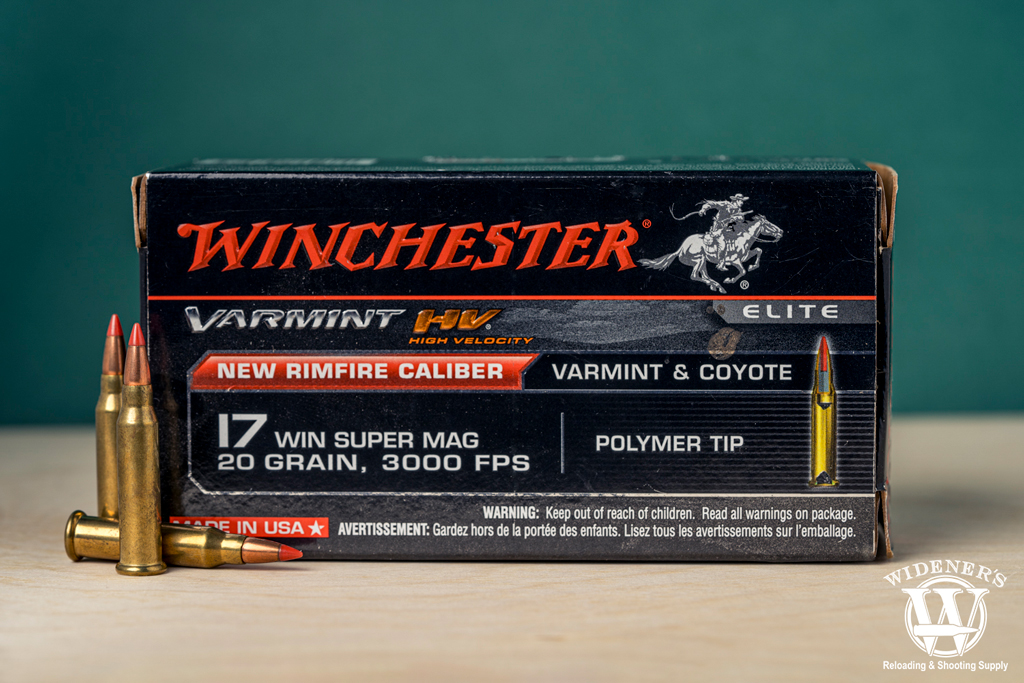
Winchester .17 WSM ammo is a great choice for taking care of varmints and pests.
Winchester manufactures three polymer tipped bullets: the lightest is a 15-grain non-leaded bullet with a 20-grain midweight and a “heavy” 25-grain bullet.
The 20-grain poly-tip version performs quite well, too. It has a muzzle velocity of 3,000 FPS and muzzle energy of 400 ft-lbs. At 200 yards, it clocks in at over 2,000 FPS and maintains 188 ft-lbs of energy. It has a bullet drop of 4.1”.
Regardless of which Winchester.17WSM variant you go with, you’ll enjoy superior performance when compared to the .17HMR. The Varmint X rounds have significantly less bullet drop and retain more muzzle energy at a distance.
| Caliber | Bullet Type | Bullet Weight | Velocity (Muzzle) | Energy (Muzzle) | 50 Yards (Velocity/Energy) | 100 Yards (Velocity/Energy) | 150 Yards (Velocity/Energy) |
|---|---|---|---|---|---|---|---|
| .17 WSM | Polymer | 20gr | 3,000 FPS | 400 FT LBS | 2,745 FPS/335 FT LBS | 2,504 FPS/278 FT LBS | 2,275 FPS/230 FT LBS |
.17 WSM Quick Answer Box:
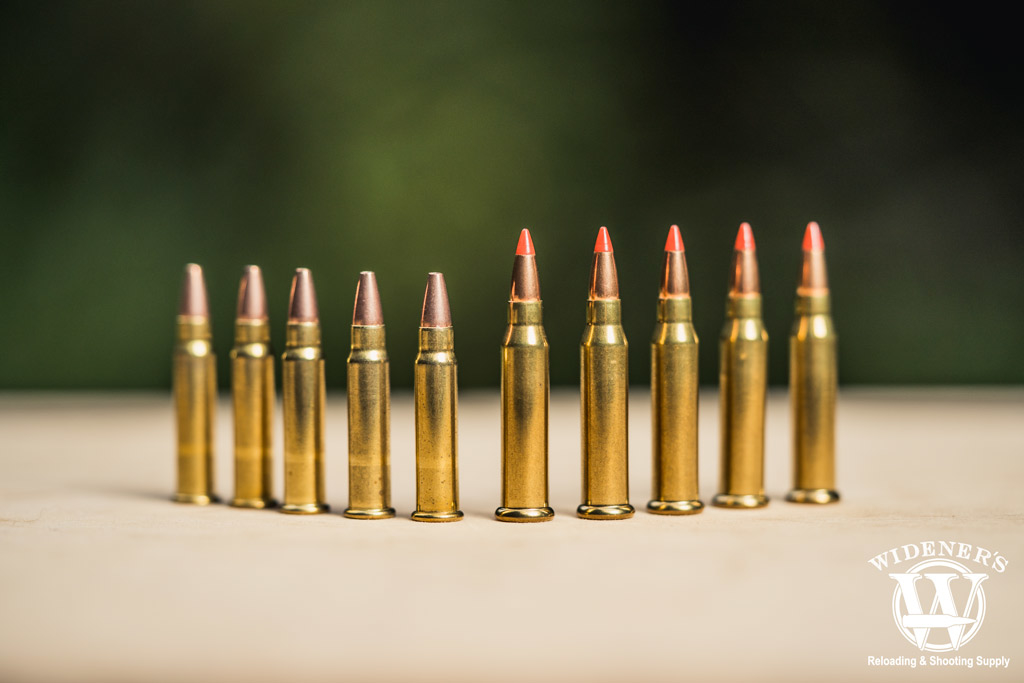
A side-by-side view of .17 HMR ammo (Left), and .17 WSM ammo (Right).
• What is the difference between 17 HMR and 17 WSM? The .17 HMR cartridge is shorter and has less velocity and bullet weight than the .17 WSM cartridge. The .17 HMR casing is a necked-down .22 Magnum case set to take a .17 caliber bullet. If you work in construction, you may already know the .17 WSM casing is based on a .27 caliber nail gun case used to set nails in concrete.
• What type of magazine does a 17 WSM rifle use? It depends, the most commonly used .17 WSM magazine is the Savage B Mag for bolt action rifles. The Franklin Armory F17 series is based on the AR-15 platform and utilizes a 10 or 20-round AR-style magazine. Other rifles, like the lever-action Winchester 1885 Low Wall, are breach-load and do not require a magazine for feeding the ammunition.
• Can I shoot 17 WSM ammo in a 17 HMR rifle? No, you can’t safely fire .17 WSM cartridges from a rifle chambered in .17 HMR. The SAAMI PSI of the .17 WSM cartridge is 33,000 pounds, the PSI of the .17 HMR cartridge is 26,000 pounds. This difference in pressure makes it unsafe to fire a .17 WSM cartridge in a rifle chambered for .17 HMR.
Why Is The .17 WSM A Good Choice?
The exceptional characteristics of the .17 WSM extend beyond its impressive ballistics. Its design caters to a variety of shooting disciplines, making it a versatile choice for hunters and target shooters alike. For hunters, the .17 WSM’s high velocity and energy levels mean it’s highly effective for small game and varmint hunting at longer ranges, where traditional rimfires might falter. The round’s flat trajectory and reduced wind drift allow for more accurate shots, increasing the likelihood of a successful hunt.
Target shooters appreciate the .17 WSM for similar reasons: its precision at extended distances offers a challenging and rewarding experience. Additionally, despite its power, the .17 WSM produces relatively low recoil, making it a comfortable option for shooters of all skill levels. This combination of power, precision, and ease of use solidifies the .17 WSM’s status as a top choice in the rimfire category.
Should I Buy A .17 WSM Rifle?
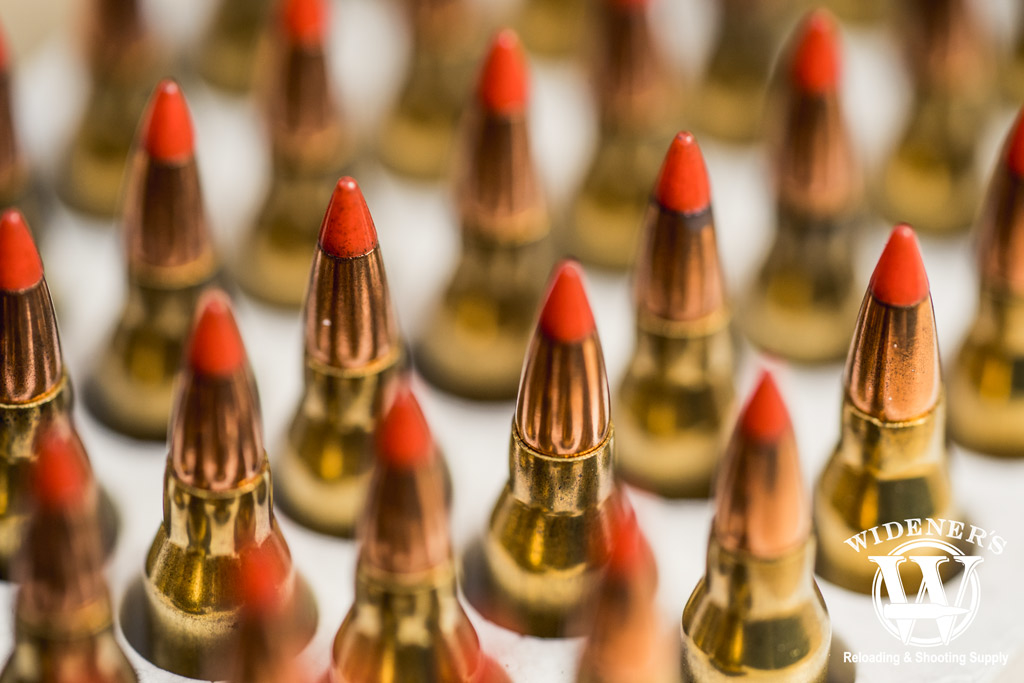
Does a lack of ammo variety hurt the popularity of the .17 WSM?
The popularity of .17 WSM remains to be seen in how widespread its growth will be. Only a few brands of rifles are currently available which the common man can access and they cost about the same as a comparable centerfire. With fewer choices in the marketplace, it may be very difficult to see growth in the usage of the cartridge. It does do what Winchester intended it to do really, really well. Not to mention, if you want to shoot suppressed, you can use a less expensive rimfire can. The .17 WSM carries great to 200 yards but drops off after that which might be a real selling point for landowners with relatively close neighbors.
Lack of choice in ammunition for .17 WSM owners is a drawback. People in the rimfire market for this caliber are likely already using cheaper calibers for plinking. The key takeaway is that this is a very promising dedicated varmint or precision shooter cartridge. It is extremely accurate and still much less expensive than other common precision calibers. A day at the range with the .17 WSM will cost less and last longer than with a 6.5 Creedmoor. If high-speed, high-performance cartridges in a diminutive rimfire-sized casing sound like your idea of fun. You’re going to love the .17 WSM.


